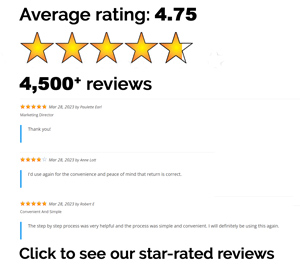Investing in your retirement not only helps you save for the future but can also lower your next tax bill. Below we’ll break down how investing in a 401(k) can impact your taxes and what your options are for 2023 and beyond.
Types of 401(k) Plans
A 401(k) plan is a company-sponsored retirement account for employees to contribute income from their paychecks. Some employers will also match a percentage of the employee contribution, increasing the overall savings.
There are two main types of plans to choose from:
- Traditional tax-deferred 401k
- Post-tax Roth 401k
Roth versus Pre-Tax 401(k)
A traditional 401(k) plan is pre-tax or tax-deferred. This means that the money you contribute to the account is not taxed until it is withdrawn.
A Roth 401(k) is a post-tax retirement account. This means that the money you contribute is taxed before it is deposited, so you will not pay taxes on that money when it is withdrawn.
For both traditional 401(k) plans and Roth 401(k) plans
- Contributions are automatically taken from your paychecks
- There are employer matching options (aka. Free money for you)
- The contribution limit is the same
Each plan has tax advantages, but it’s important to understand how to use them to get the most benefit.
Why Invest in a 401(k)?
Investing in a 401(k) plan is a great way to build wealth, save for retirement, and get tax benefits along the way. But the type of plan you contribute to will make a difference in how that money is taxed and when it makes sense to invest.
Traditional 401(k)s reduce your taxable income now
Investing a portion of your paycheck into a traditional 401k reduces your taxable income now—which, in turn, lowers your total tax bill for the year. In other words, when you contribute to a traditional 401(k), that money goes into the account tax-free and is subtracted from your total income for the year.
Bonus: Any interest on those contributions is also tax-deferred. So you only pay taxes on that money when you withdraw it.
Investing in a 401(k) is a great option for lowering your tax bill now. Plus, many people have a smaller retirement income than when they were working. So even though the distributions are taxed, if you’re in a lower tax bracket as a retiree, you may still save on the amount of taxes you ultimately pay on that money (depending on your income when you invested).
Roth 401(k)s reduce your taxes later
Like a Roth IRA, a Roth 401(k) is a post-tax investment account. This means that contributions come out of your paycheck after taxes, so they do not impact your taxable income. However, when you withdraw the money later, that money is tax-free.
A Roth 401(k) is advantageous for taxpayers who expect to make more money over time and be in a higher tax bracket in retirement. By investing that taxed money now, you can take the distributions tax-free later. This is often a great choice for younger taxpayers still early on in their careers.
How Much Can You Contribute?
There’s good news for 2023. Individuals can now contribute up to $22,500 to any 401(k) plans—up from $20,500 for 2022. And for taxpayers over 50 years of age, the contribution limit is $30,000 (or a $6,500 catch-up contribution). This limit applies to both traditional and Roth 401(k) plans. You can also contribute to both plans throughout the year as long as the total combined contributions don’t exceed that $22,500-$30,000 cap.
Investing in 2023
If you plan to max out your contributions this year, it’s best to start investing in your 401(k) now. Spreading out your contributions through the year is usually more manageable than investing a larger sum of your income at the end of the year. Plus, the longer your money sits in the account, the more time it has to grow.
Pro Tip: Check your employer’s plan to confirm their matching policy (if they match at all). Some employers will only match contributions if you defer part of your paycheck each month—so maxing out your contributions early might mean you lose out on the employer match.
Taking the Saver’s Credit on Your Tax Return
In addition to the tax savings you can get from investing in a 401(k), you may also be able to take a tax credit for making eligible contributions to your IRA or employer-sponsored retirement plan. The credit is called Retirement Savings Contributions Credit (or Saver’s Credit).
You’re eligible for the credit if you’re:
- Age 18 or older
- Not claimed as a dependent on another person’s return
- Not a student
- Meet specific income caps
The credit is designed to incentivize lower-income households to save, so only taxpayers who have an income up to $68,000 (if married filing jointly), up to $51,000 (if head of household), or up to $34,000 (for all other filers) are eligible.
Investing in a 401(k) plan—whether that’s a traditional or Roth plan—has significant tax advantages and implications. Whatever your investment strategy, ezTaxReturn can help you navigate the tax filing process.




